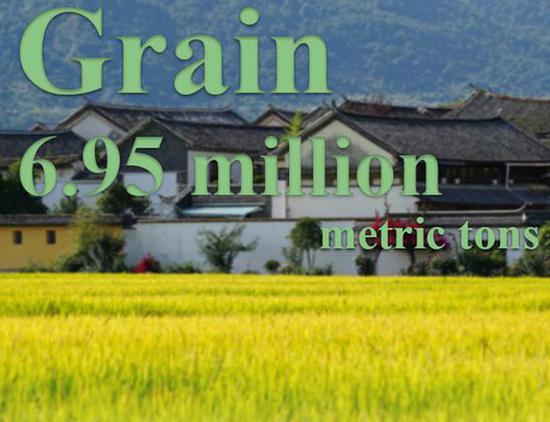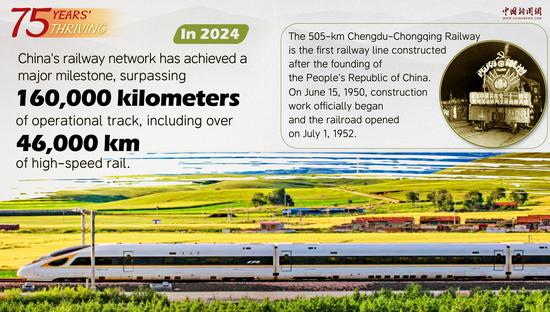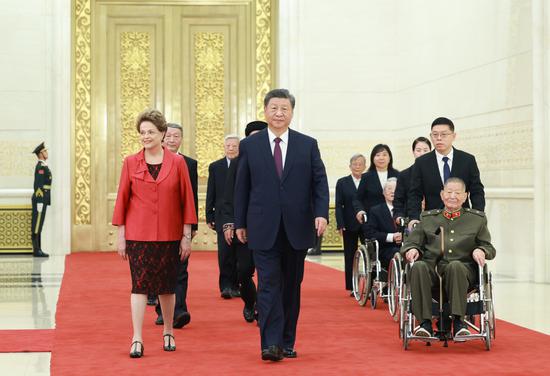Spot gold recently surged to historic highs on strong demand, Fed cuts
Gold prices have consistently reached all-time highs this year, yet this hasn't dampened consumers' eagerness for the precious metal.
What sets this year apart is the stark contrast in demand between gold jewelry and coins/bars since the year began, as consumers are gravitating toward investment-oriented products with little processing charges.
Meanwhile, many consumers opted to liquidate their holdings, leading to a thriving market in gold recycling and trade-ins, said industry observers.
Influenced by factors like geopolitical tensions, US Federal Reserve rate cuts, and global central banks' increase of gold reserves, they also forecast that gold prices may continue to rise. Against this backdrop, they indicated that the divergence between Chinese gold jewelry and gold coins/bars consumption may persist in the latter half of the year.
This trend will continue to benefit upstream gold mining firms while creating challenges for downstream retail sales, they said, adding that companies need to innovate products with smaller weight increments and new features to attract consumers.
Elevated prices
Data from the World Gold Council reveals a 12 percent increase in gold prices in the first half of this year, with prices predominantly exceeding $2,300 per ounce in the second quarter.
The upward trajectory continued into the third quarter. On Sept 25, spot gold prices surged to a historic high of $2,670 per ounce, and may continue to keep hitting record highs, while gold prices denominated in Chinese renminbi on the Shanghai Gold Exchange also witnessed an uptick. On Sept 25, Shanghai Gold Au 99.99 contracts closed at 595.66 yuan ($85) per gram, with the peak price hitting 599.28 yuan per gram.
Accordingly, gold retail prices in China have also seen a rapid increase this year, with various gold jewelry brands like Chow Tai Fook and Chow Sang Sang pricing their products above 750 yuan per gram in September. Other brands like Chow Tai Seng, Lao Feng Xiang, and China Gold, set their gold jewelry prices mostly ranging between 730 yuan and 770 yuan per gram.
Wang Lixin, regional CEO of the World Gold Council (China), noted, "Last year, the primary drivers of rising gold prices were robust investment demand and heightened geopolitical risks. These factors continue to play an important role in driving up gold prices this year. Additionally, the inflow of Western gold exchange-traded funds and the initiation of the Federal Reserve rate cut cycle have contributed to declining interest rates and a weaker dollar, further propelling gold performance."
Liu Yuxuan, a precious metals researcher at Guotai Junan Futures, said, "Investor enthusiasm for gold investment remains robust, with recent price surges accompanied by investors' sustained long positions. Many investors view gold as a hedge against risks associated with other assets and as a secure long-term investment option. This trend reflects a pessimistic outlook on the global economic situation, where investors seek stability in an uncertain economic environment."
"The current scenario suggests that despite Fed's 50 basis points rate cut this year, there is potential for another 50 basis points cut in November or December, and anticipated cuts of 100 basis points in 2025 and 50 basis points in 2026, totaling a potential 250 basis points cut. While gold prices have already surpassed $2,600 per ounce as some markets may have factored in the 100 basis points rate cut for the year, the expectation of a 250 basis points cut is likely not fully priced in. This provides strong momentum for gold prices to continue their ascent at elevated levels," Liu said.
Furthermore, a recent report from the World Gold Council highlighted that central banks' gold purchases have and will continue to contribute to the uptrend in gold prices. In July, global central banks' net purchase of gold reached 37 tons, marking a 206 percent increase from the previous month, the highest monthly increase since January. The WGC has forecast a continuation of this trend among global central banks in the near future.


















































 京公网安备 11010202009201号
京公网安备 11010202009201号